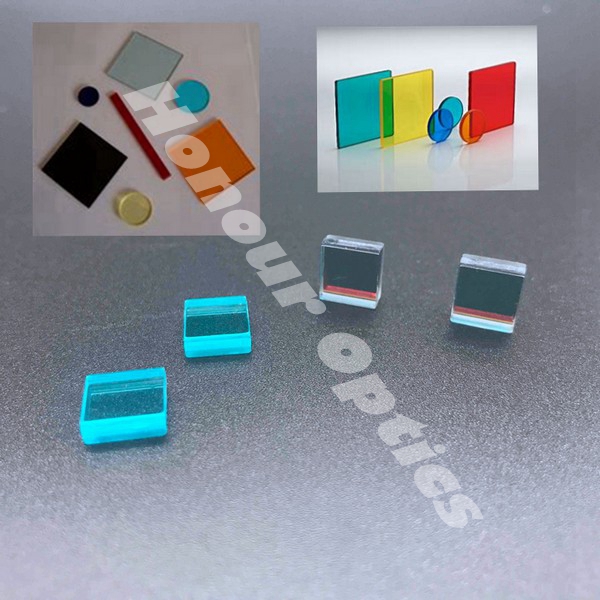
Filters
Absorption and particularly wavelength selective absorption is an important factor in the function of the filters. The two most commonly used absorbers are thin metallic films which are particularly insensitive to wavelength for absorption and colored glasses which absorb wavelengths varied by as much as several orders of magnitudes in only tens of nanometers. Interference filters are multilayer dielectric thin film devices. Metallic films, colored glasses and thin dielectric films are used in Honour filters.
Birefringent Filter

Specifications | |
Material | Crystal quartz |
Parallelism | <5 arc seconds |
Surface Quality | 20/10 |
Diameter Tolerance | +0.1,-0.2mm |
Clear Aperture | 90% of the central area |
Thickness | 0.50mm |
Thickness Tolerance | ±0.02mm |
Laser Line Interference Filters
| ||||||||||||||
Neutral Density Glass Type
| ||||||||||||||
Metallic Coating Type
| ||||||||||||||||
Long Pass Filters
|
| ||||||||||||||||||||||||||||||||||||||||
 Short Pass Filters
Short Pass Filters
| ||||||||||||||||||||||||||||||||||||||||||
Broad Bandpass Filters
| A long pass filter and a short pass filter fastened together to create a variable bandpass filter with an bandwidth from 20nm to 100nm. The center wavelength allows to be adjusted by combining different long pass filter and short pass filters. |
| ||||||||||||||||||||||||||||||||||||||||||
Day and Night Filters
Day and Night filters pass the visible and 850nm of wavelength but cut off the NIR region from 950nm-1100nm. The filters are used in CCD or CMOS imaging system to produce a true color image. This filter allows the imager to work both at day and night. The application areas concern the secure monitoring, digital camera, visual telephone, visual doorbell, digital telescope and visual check-in recorder etc. |
|
| ||||||||||||
Isolation Edge Filters
The isolation edge filter is to cut off the visible and pass the 850nm or 940nm of wavelength. The function of such edge filter isolates the objects and detector. The viewer can not discover the detector by naked eyes. |
|
| ||||||||||||